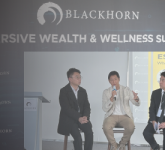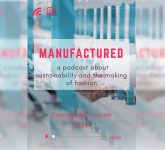By Arthur Friedman 22 Aug 2019
Silk has long been a staple luxury fabric used in a range of merchandise, from luxurious lingerie to high-end eveningwear and occasion apparel.
Now, alternative fibers and fabrics have been developed thanks to advancements in technology and raw material sourcing that offer more sustainable and performance-oriented options compared to traditional silk.
Organic silk
At Bombyx, which creates environmentally conscious textiles using industry best practices, exquisite silk is a focus—but so is producing it sustainably.
“Our silk is high-end and certainly a luxury fabric, but at the same time we strive to make silk an aspirational, affordable and sustainable material,” Bombyx president Hilmond Hui, said. “We set new standards through transparent business practices and a trusted supply chain by integrating socially and environmentally responsible approaches to benefit all stakeholders, communities and nature….We believe that innovative silk production will bring about more sustainable growth in the industry.”
The process at Bombyx starts with its organic growing practices that incorporate regenerative agriculture techniques to restore the vitality of the soil, allowing farmers to resume the planting of mulberry trees—where silk moths lay their eggs—and prepare for the next harvest quicker and more efficiently. In order to produce the highest quality cocoon for their customers, Bombyx uses organic fertilizer, releasing fewer carbon emissions and improving the condition of the soil.
Compared to traditional agricultural practices included in silk production, Bombyx processes are more sustainable and energy efficient, according to Hui.
The company’s environmentally friendly methodology, for one, includes energy saving equipment, productivity control systems, eco-friendly sewing machines and automatic sewing machines. These policies, Hui said, “reduce carbon emissions, protect local soil and water, and increase the income of those in our supply chain.”
“Bombyx was developed based on an idea that we could reduce costs socially, environmentally and economically in the production of silk,” he said. “We have had several cocoon harvests and are in the process of creating partnerships with international brands to create high-end products made from Bombyx silk.”
People for the Ethical Treatment of Animals (PETA), has said, in pushing for banning silk production, that many of the insects used by the silk industry are boiled or gassed alive inside their cocoons, which causes the cocoons to begin unravelling so workers can obtain the silk threads. Some 6,600 silkworms are killed to make just 1 kilogram of silk.
Bombyx’s silkworms are raised and harvested at an eco-friendly organic sericulture base. Sericulture is used to define the raising of silkworms for the manufacturing of silk. The firm invested in a production facility located in Sichuan Province’s Yilong County in China, where silkworms are raised and harvested at an eco-friendly organic sericulture base.
Launched this spring, Bombyx is currently focusing on media relations and a strong social media presence to build awareness in the U.S. while establishing relationships with brands.
“In the next three years, we are planning to build three new facilities to allow direct control of the entire manufacturing process from mulberry tree to finished fabric,” Hui said. “We also continue to find ways to improve our local communities and reduce environmental harm throughout our manufacturing process.”
PETA has led a movement to take silk out of the supply chain, lumping it into the group of animal-based fibers, like fur and woolens. Asos banned silk, mohair and cashmere from its product ranges last year, as part of its updated animal welfare policy.



